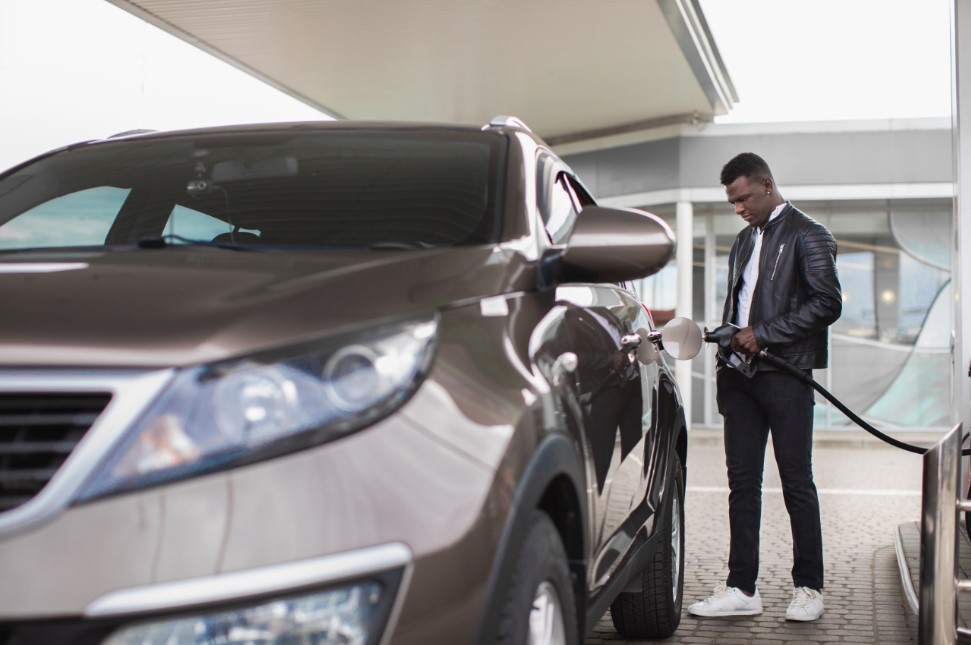How To Tell Your Brake Fluid Is Low & What to Do

There’s casual braking for a red light, and there’s crisis braking to avoid a car wreck. In both cases you really need your car to stop. Your braking system is arguably the most important safety feature on your car. It needs to work. Every time. Do you know what is necessary for your braking system to work every time? Brake fluid. And, did you also know that low brake fluid can cause your car to stop working properly, causing a very important safety feature of your car to become unreliable? Obviously, this would be very unsafe for you and everyone else on the road. Let’s avoid this, shall we?
To avoid this very dangerous and expensive braking system problem, we recommend a strong knowledge of brake fluid. It's important to understand how to tell if you have low braking fluid and what you should do if your brake fluid is low.
How to Tell if Your Brake Fluid is Low
If your car's brake fluid is low, the chances are that you'll notice one or more of the following symptoms…and they should concern you!
Your Brake Fluid Looks Low
The easiest way to check if your brake fluid is actually low is by inspecting the brake fluid reservoir yourself, usually marked by a fill line along with the word “Full”. If it's just a little low, you can add more to top it off, but if things are really low, you'll want to take it in for service to locate the leak or identify the problem. It is never supposed to be really low.
Your Brake Pedal Feels Spongy
Have you noticed a recent change in your car's braking ability? Soggy, spongy, or loose brake pedals could mean that you have been running very low on brake fluid. If the recent spongy braking experience happened very suddenly, there may be a major leak in your system.
Your Low Brake Fluid Light Pops On
Modern vehicles have sensors that will tell you if you are approaching low brake fluid levels. This is the symbol that also illuminates when you have your emergency parking brake engaged and looks like this:
If you're unsure what your low brake fluid light may look like, you can always check your car owner's manual from the manufacturer. It may also look like a small oil lamp or even your ABS warning light.
We’ve covered the basics on how to tell if your fluid is low, and we feel it’s important to cover two questions we receive a lot. Let’s answer these two questions, then we’ll offer some recommendations on what to do about low fluid.
How Long Can You Drive with Low Brake Fluid?
You can still drive, but filling up should be done as soon as possible; although, if the levels are too low, you may not be able to drive at all. Doing so could cause major damage to your brake system and even put your life in danger. How long you can drive on low brake fluid is the wrong question. Ask - how quickly can I get my car to Christian Brothers for a brake inspection?
Why Does My Brake Fluid Keep Running Low?
There are two things that can cause your brake fluid to appear low or actually be low. One, your braking system could have a leak; in this case the fluid is actually gone. Two, your brake pads are significantly worn down; in this case, because more fluid is required in the brake line in order to move the caliper to close on the rotor, there will be less fluid in the reservoir, giving the appearance that you’re low on fluid.
Regardless of the reason, it is neither safe nor normal, and it warrants a visit to your local auto shop.
Now that you’re familiar with noticing low fluid and why it’s happening, let’s wrap up with what we recommend as a next step.
Get Your Brake Fluid System Flushed
You should have it filled or flushed as soon as you notice low brake fluid, depending on your needs. If the remaining brake fluid in your system is dirty or otherwise discolored, a system flush should be your next step.
Pro tip: To get the most out of your car's brakes, you should have the car's fluids flushed and replaced every 30,000 miles or two years. You'll likely feel a difference after service!
Schedule Your Low Brake Fluid Inspection & System Flush Today
It's impossible to do a proper brake fluid flush on your own. The most you'll be able to do is a fluid swap or change, leaving out some crucial steps that protect the fresh fluid. Heading into your local auto shop will help you make sure that your brakes continue to be as reliable as possible. And, if your car is leaking brake fluid, we’ll figure out why.
When you're ready, locate your closest Christian Brothers Automotive and call today or book online to schedule your visit – we're experts and professionals, ready to help you complete the service you need to get back out on the road.


[1].jpg)
sunwash-tech-with-customer.png)

